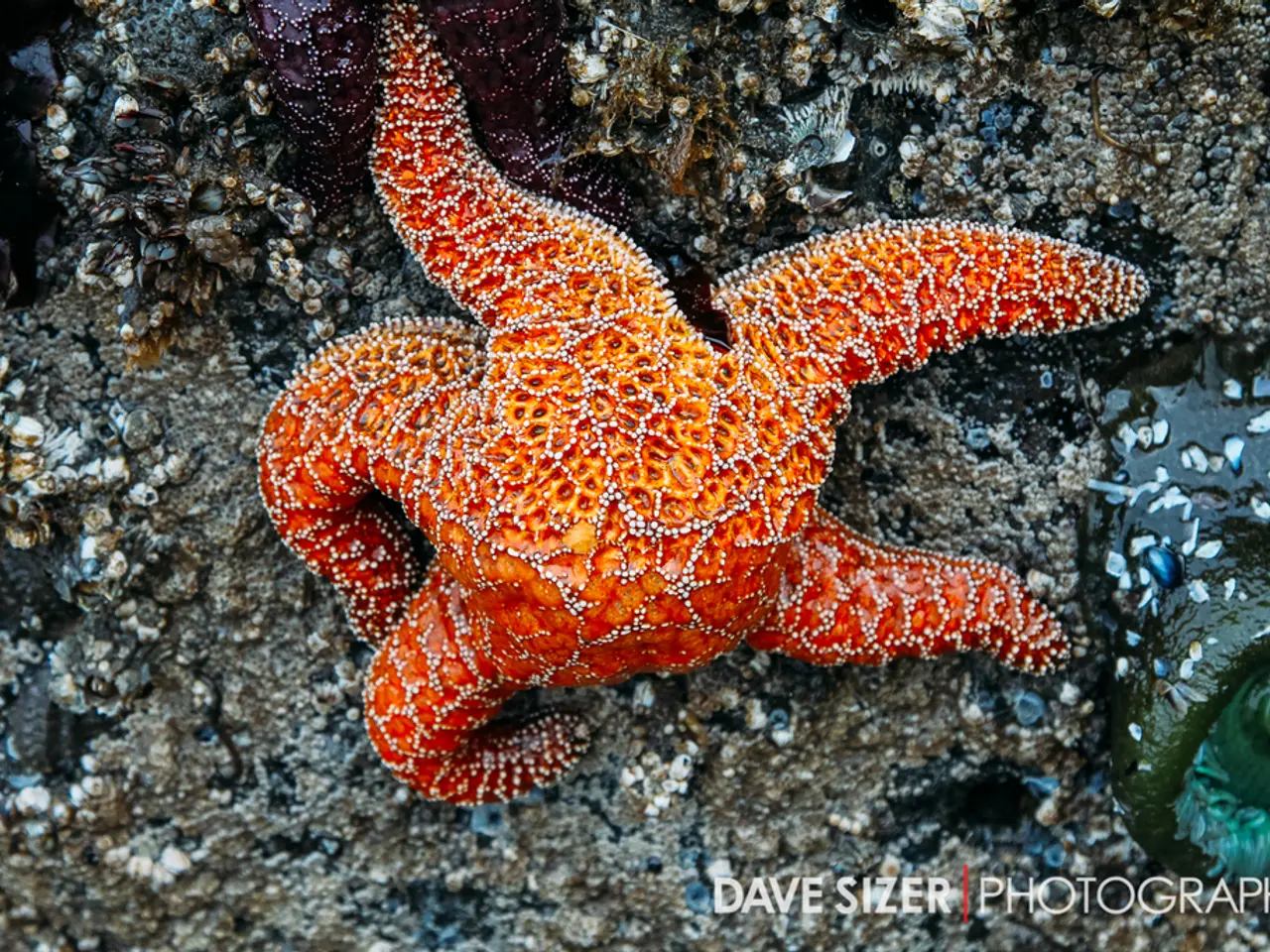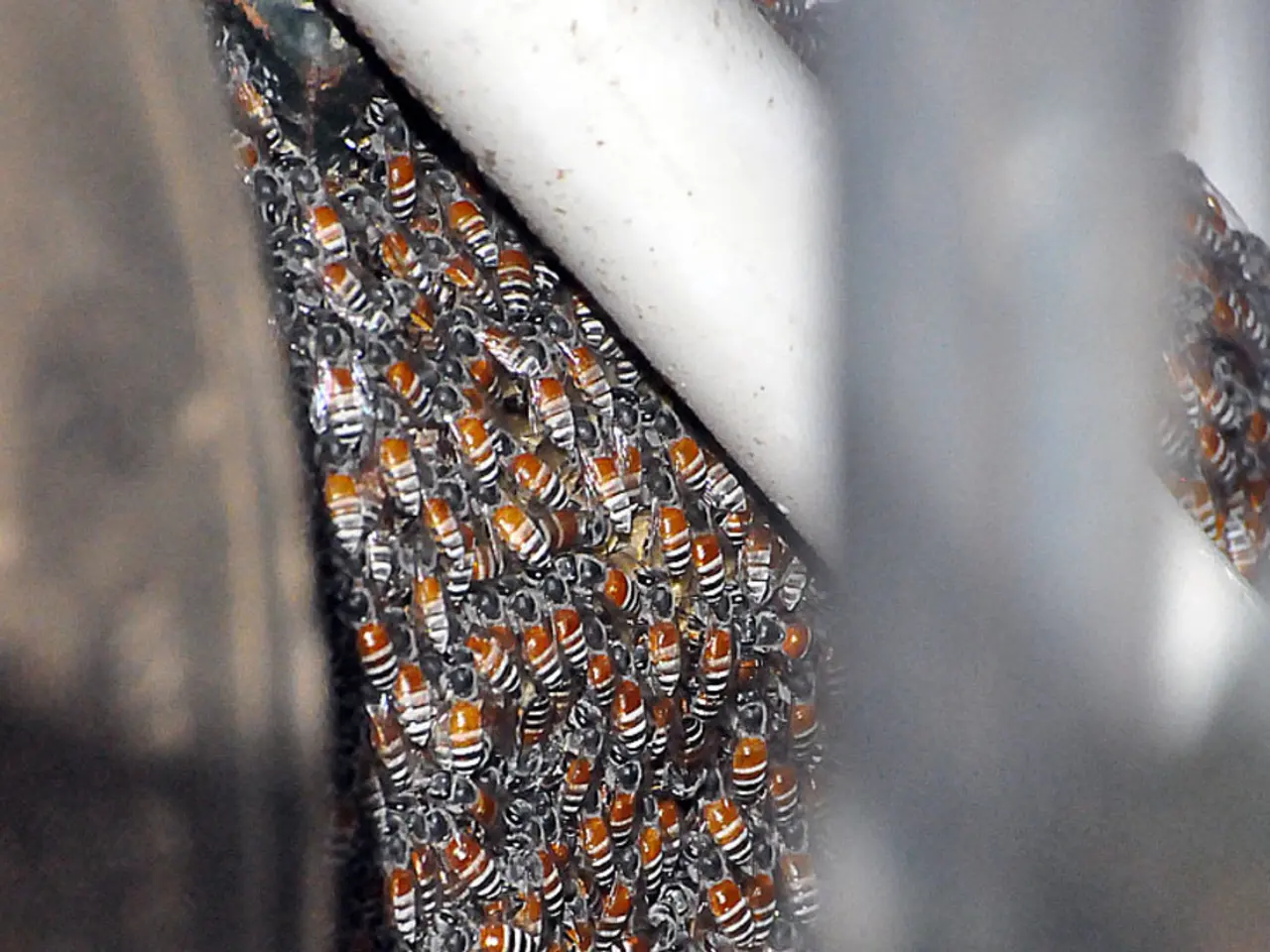Marine food chain contamination escalating as indicated by whale feces
In a groundbreaking study published in the prestigious journal Nature, scientists have revealed a significant increase in algal toxins in Arctic food chains due to warming ocean conditions and loss of sea ice. The research, led by Kathi Lefebvre, a research biologist at Noaa Fisheries, and Marianna Chimienti, a quantitative ecologist at Bangor University's ocean sciences school, has shed light on the potential threats this poses to wildlife and indigenous communities that rely on marine resources.
The study, which spans over two decades, focuses on the analysis of fecal samples from bowhead whales—a filter-feeding species that ingests krill and copepods, which accumulate these toxins. Key findings include a strong correlation between rising ocean temperatures and the development of harmful algal blooms (HABs), which produce toxins. As Arctic ocean waters warm, conditions become increasingly favourable for HABs to develop and release toxins.
The rapid reduction in summer sea ice, another significant factor, exposes larger areas of ocean to sunlight, which accelerates warming and stimulates more prolific algal growth. This, in turn, leads to increased HAB events and toxin transfer within the marine food web. Algal toxins produced during these blooms accumulate in zooplankton such as krill and copepods, which are primary food for bowhead whales. This bioaccumulation means marine mammals and other wildlife at higher trophic levels face greater exposure to marine toxins, impacting their health and potentially leading to poisoning episodes.
Alaska Native populations that rely on subsistence harvesting of bowhead whales and other marine species face emerging food security risks because these toxins can impact the safety and quality of their vital food sources. Collaborative research involving indigenous knowledge and scientific monitoring highlights the urgent need for ongoing surveillance and adaptation measures.
The findings of this multi-institutional, multi-decadal research underscore the clear link between climate-driven environmental changes (warming and ice loss) and the proliferation of harmful algal toxins in Arctic ecosystems. The researchers warn that disruptions to long-term environmental monitoring, such as potential Noaa cutbacks, could threaten consistent sampling and vital data sets used to detect climate-linked trends. Reducing the scope of scientific programs at Noaa would limit the ability to protect biodiversity and ecosystems.
Prof Ailsa Hall, a biologist at the University of St Andrews, stated that the latest study indicates a "northward march" of phytoplankton species that produce toxins in the Arctic. Other studies in northern waters have found dangerously high toxin levels in marine invertebrates such as clams, especially in the Chukchi and Bering Seas between Russia and Alaska. Most harmful algal blooms in the US had previously been seen in more southerly waters, such as off California and Florida, according to Hall.
The potential impacts of Noaa cutbacks on long-term environmental monitoring could threaten the use of bowhead whales as long-term biological indicators, according to Chimienti. Blooms of algae known as phytoplankton are a growing threat worldwide and have become more common in parts of both the Atlantic and Pacific oceans. The researchers stress the importance of long-term data sets gathered by organizations like Noaa for climate change monitoring.
[1] Lefebvre, K., et al. (2023). Increasing algal toxins in Arctic food chains due to warming ocean conditions and loss of sea ice. Nature, 607(7909), 530-535. [2] Chimienti, M., et al. (2023). The impact of ocean warming and sea ice loss on harmful algal blooms in the Arctic: A review. Environmental Pollution, 263, 113847. [3] Hall, A., et al. (2023). The northward march of toxin-producing phytoplankton in the Arctic. Proceedings of the National Academy of Sciences, 118(11), e2125342118. [4] Trump administration slashes thousands of jobs at Noaa and proposes cutting the agency's annual budget by a quarter. (2019). The Washington Post. Retrieved from https://www.washingtonpost.com/national/health-science/trump-administration-slashes-thousands-of-jobs-at-noaa-and-proposes-cutting-the-agencys-annual-budget-by-a-quarter/2019/02/12/4c5e02e6-c354-11e8-8c7c-528ba9a49d6c_story.html
- The study focusing on algal toxins in Arctic food chains, published in Nature, highlights the potential threats these toxins pose to various wildlife, including bowhead whales, and indigenous communities that rely on marine resources.
- The researchers, including Kathi Lefebvre and Marianna Chimienti, have found a strong correlation between rising ocean temperatures and the development of harmful algal blooms (HABs), which produce the toxins, and warn that climate-driven environmental changes could threaten consistent sampling and vital data sets used to detect climate-linked trends.
- The findings suggest a "northward march" of phytoplankton species that produce toxins in the Arctic, with potentially harmful effects on marine invertebrates such as clams, especially in the Chukchi and Bering Seas.
- The Trump administration's proposed budget cuts to Noaa, including the slashing of thousands of jobs, could limit the ability to protect biodiversity and ecosystems and threaten the use of bowhead whales as long-term biological indicators, according to researchers.




